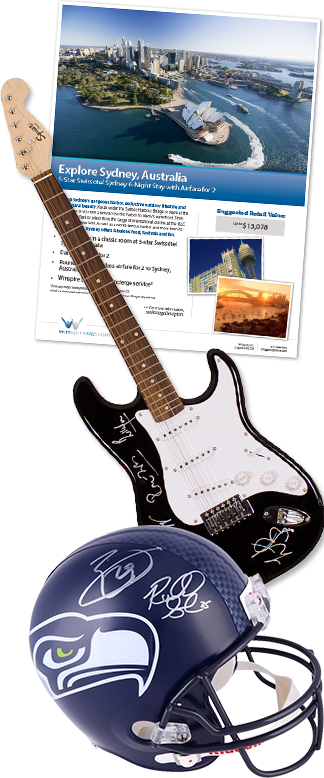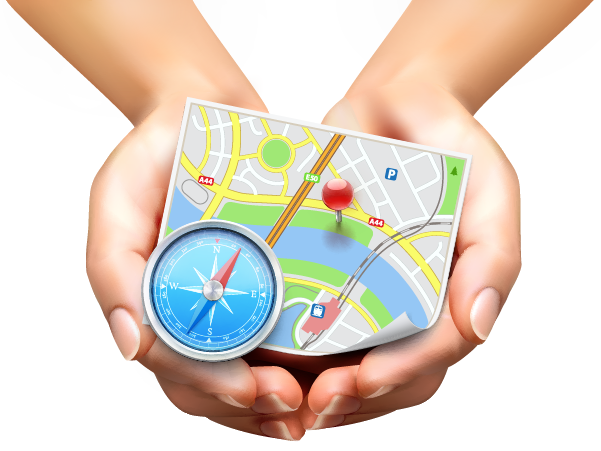A successful charity auction relies on your ability to procure exciting and appealing auction items for your donors to bid on. Even with a dedicated and knowledgeable auction committee, this can be a daunting task.
One way to simplify your procurement efforts and boost the overall revenue of your event is by presenting your guests with a generous offering of both donated and consignment auction items.

Consignment auction items are typically high in value and difficult for the average auction committee to procure. Types of consignment items include:
- Vacation Travel
- Sporting Events
- Entertainment (Concerts, Award Shows, etc.)
- Autographed Memoribilia
(Sports, Music or Celebrity) - Jewlery
One of the most common reasons organizations turn to consignment auction items is because they can be reserved last-minute and zero cost, but committees can use consignment items much earlier in the process to avoid this panicked scramble altogether.
Try reserving a few consignment items first, then wait to see what kind of donations come in. This will reduce your stress level and give you resources to leverage while you wait for your procurement team to bring in donated items.
Consignment items can have a positive impact on your workload, donor relationships and the overall revenue of your event. Below you will find 7 reasons consignment auction items are an increasingly popular tool that many Nonprofits are turning to in the early stages of event planning.
 1. No-Risk
1. No-Risk
All consignment companies are not the same. Make sure the items you are reserving are truly no-risk, meaning that you only have to purchase items that were actually sold at the event. If bidding doesn’t reach the minimum bid amount then no transaction with the company should take place. This guarantees that you profit on all items sold.
 2. Cultivate Donor Relationships
2. Cultivate Donor Relationships
Big-ticket consignment items, especially those that include fabulous travel , will get donors talking and help spread the word about your fundraiser. Such items provide a great opportunity to connect with new donors and strengthen existing relationships as you build excitement for their trip.
Expert tip: Find out what’s on your their Bucket Lists. Start a dialogue with your biggest donors about their future travel plans and leverage this information to offer unique trips tailored to their interests.
 3. High-Yield Items
3. High-Yield Items
Consignment companies specialize in knowing what items will experiencesdraw high bids from your donors, and they can usually offer these items at attractive prices. These are known as “high-yield” items and include such things as artwork, signed sports and celebrity memorabilia, tickets to a unique event and luxury travel packages. Even though your Nonprofit won’t keep the full amount raised on a consignment item, your profit can still be hundreds or even thousands of dollars per item.
 4. Sell Multiple Times
4. Sell Multiple Times
Many types of consignment items, such as unique experiences and travel packages, can often be sold multiple times with no limit. This allows you to sell packages to more than one bidder, doubling or tripling the amount you make on each package. You can even continue to sell these items after the event to donors who could not attend or did not bid.
Expert tip: Leverage bidding wars. If bidding gets down to a few competitive bidders, let them drive up the price and then wait for someone to drop out before offering the item to all of them. The same thing can be done after a silent auction by reaching out to the top bidders on consignment items.
{{cta(‘d30e274e-d519-429e-8124-430be6d9a1d6′,’justifycenter’)}}
 5. Build Excitement
5. Build Excitement
Offering high-end unique items or experiences can boost the overall appeal of your event. Energizing your audience with exciting items can create the kind of “buzz” that drives up bidding on other items. High energy auctions will delight your attendees and leave a lasting impression on your donors.
 6. Ease of Procurement
6. Ease of Procurement
One of the biggest advantages of consignment items is that they are very easy to select for your auction. Instead of sending out hundreds of donation request letters, you simply “reserve” the items you want to sell at the event. This allows you to spend more time focusing on other critical details about planning the event.
Consignment items also serve as a great backup if your original procurement plan falls through. In fact, it’s usually possible to reserve items last minute. Physical items such as sports memorabilia can take a few days to ship, but travel and entertainment packages can usually be reserved from months in advance all the way up to the day of the event.
{{cta(‘8ee7d503-c9ba-4b63-83cd-0d389f063597′,’justifycenter’)}}


